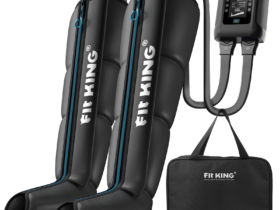If you use wearable devices, you may have encountered metabolic equivalents, also known as METs Fitness trackers, these days measure more than how much you walk. These devices can feature sleep trackers, heart monitors, calorie counters, and more. Most people who have wearable devices tend to underutilize their full features. This is understandable considering the high amount of info these gadgets churn out. Nevertheless, your wearable device can give you helpful feedback if you know how to decipher the numbers.
Mets and Basal Metabolic Rate
Mets are calculated using resting or basal metabolic rate. One MET denotes the energy amount your body uses while sitting still or resting, which is also your basal metabolic rate. So, if the MET value of an activity is five, it means you are using five times the amount of energy you would have used while sitting still.
The use of calories is another method to calculate Mets. For the typical adult, one MET correlates to approximately one calorie for every 2.2 pounds per hour. So, an individual weighing 150 pounds burns approximately 68 calories per hour while at rest. Each time the individual burns an additional 68 calories, he/she adds one MET. If the person burns 272 calories during an extra hour of workout, his/her workout intensity averages four Mets.
This technique of measuring workout intensity may seem a little complex, but it is much simpler than calculating oxygen amounts used while working out. Most fitness aficionados appreciate this formula because they can calculate METs using something that measures burned calories. And since most fitness trackers and equipment track burned calories, you have a great way to monitor this METs number effortlessly.
Benefits of Tracking METs
One significant advantage is that METs offer a great way to rank workout intensity. Any exercise 3 METs and below is classed as nonphysical activity or resting. Therefore, standing, washing clothes, and similar activities cannot be described as workout sessions.
Moderate physical activity includes activities that are three to six Mets. These comprise activities like swimming, snorkeling, jogging, and climbing steps. Things like hiking, fast running, speed running, and kayaking are vigorous or energetic. These activities are six METs and above.
This method of measuring workout intensity makes it very simple to compare large numbers of individuals. Using the heart rate system, which varies considerably between people, is more complex than using the number system. However, the heart rate technique offers greater accuracy when you need to measure how complex a person’s workout is.
Interestingly, several fitness trainers say they prefer to use heart rate and METs concurrently. These professionals note that METs’ uncomplicated number system allows a fast way to monitor workout intensities at various times. These experts also observe that METs can sometimes give inaccurate results, considering that it is designed for mass use. Mets can be misleading for obese individuals and people who are not physically fit. The best way to get a precise METS score is by connecting to a device that calculates your oxygen usage.
Final Words
Mets are an excellent alternative to using calories burned or heart rate for measuring exercise intensity. While its uncomplicated numerical values make things much more manageable, remember that the technique is not always precise.













